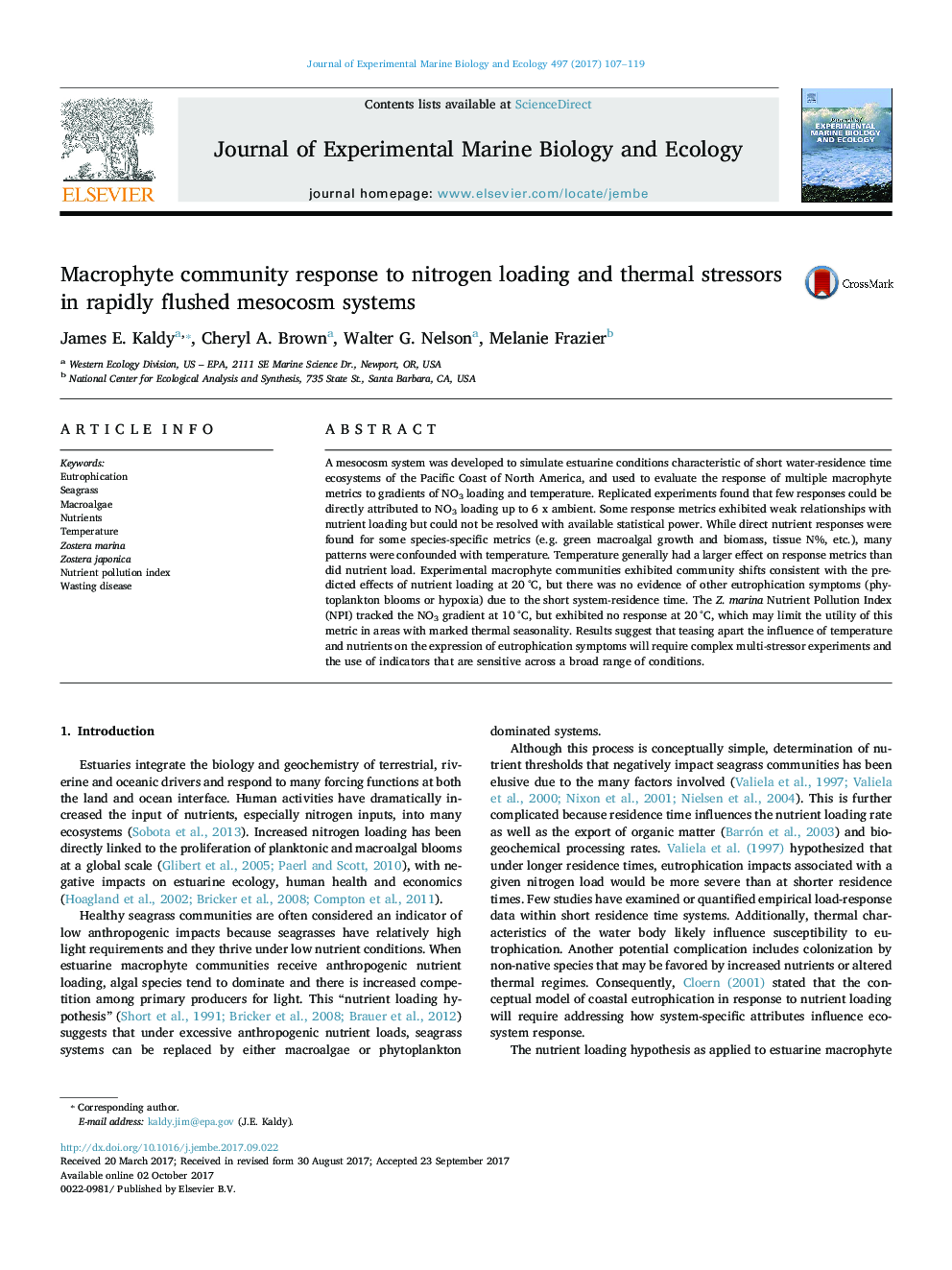| کد مقاله | کد نشریه | سال انتشار | مقاله انگلیسی | نسخه تمام متن |
|---|---|---|---|---|
| 5744438 | 1618378 | 2017 | 13 صفحه PDF | دانلود رایگان |
- Few metrics clearly responded to NO3 loading, although some had weak relationships.
- Increasing temperature generally had a larger effect than nitrogen inputs.
- The macrophyte community shifted toward algal dominance as seagrass lost biomass.
- Z. marina Nutrient Pollution Index tracked NO3 loading at 10 °C but not 20 °C.
- Defining nutrient effects requires complex experiments and sensitive indicators.
A mesocosm system was developed to simulate estuarine conditions characteristic of short water-residence time ecosystems of the Pacific Coast of North America, and used to evaluate the response of multiple macrophyte metrics to gradients of NO3 loading and temperature. Replicated experiments found that few responses could be directly attributed to NO3 loading up to 6 x ambient. Some response metrics exhibited weak relationships with nutrient loading but could not be resolved with available statistical power. While direct nutrient responses were found for some species-specific metrics (e.g. green macroalgal growth and biomass, tissue N%, etc.), many patterns were confounded with temperature. Temperature generally had a larger effect on response metrics than did nutrient load. Experimental macrophyte communities exhibited community shifts consistent with the predicted effects of nutrient loading at 20 °C, but there was no evidence of other eutrophication symptoms (phytoplankton blooms or hypoxia) due to the short system-residence time. The Z. marina Nutrient Pollution Index (NPI) tracked the NO3 gradient at 10 °C, but exhibited no response at 20 °C, which may limit the utility of this metric in areas with marked thermal seasonality. Results suggest that teasing apart the influence of temperature and nutrients on the expression of eutrophication symptoms will require complex multi-stressor experiments and the use of indicators that are sensitive across a broad range of conditions.
Journal: Journal of Experimental Marine Biology and Ecology - Volume 497, December 2017, Pages 107-119
